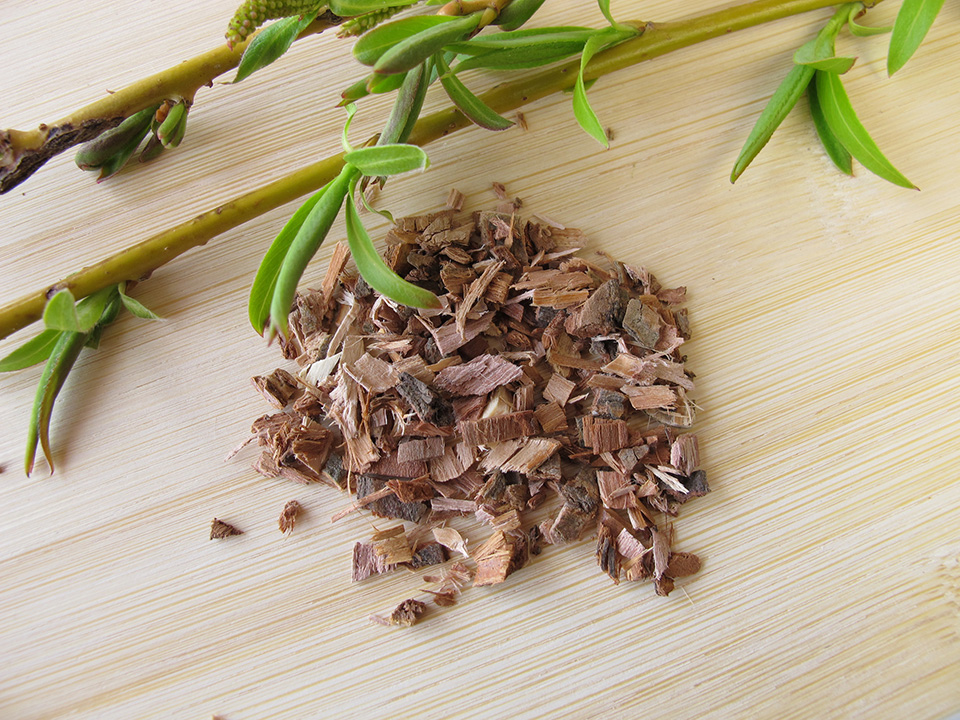
Übersicht wichtiger Publikationen
- Monographie: Salicis cortex (Weidenrinde)
Die im Bundesanzeiger vom 5.12.1984 publizierte Monographie der Kommission E
- Die Resorption von Weidenrindenextrakt erfolgt rasch
Eine Studie mit 10 gesunden Probanden, die an der Universität Tübingen durchgeführt wurde.
(Quelle: B. Schmid: Behandlung von Cox- und Gonarthrosen mit einem Trockenextrakt aus Salix purpurea x daphnoides - Studie zur Kinetik von Weidenrinde. Diss. Fakultät für Chemie und Pharmazie der Eberhard-Karls-Universität Tübingen, 1998)
- Weidenrindenextrakt zeigt signifikante analgetische Effekte bei Arthrosen des Hüft- und Kniegelenks
Eine doppelblinde randomisierte placebokontrollierte Studie mit 86 Patienten, die an der Universität Tübingen durchgeführt wurde.
(Quelle: B. Schmid, R. Lüdtke, H.-K. Selbmann, J. Kötter, B. Tschirdewahn, W. Schafner, L. Heide: Wirksamkeit und Verträglichkeit eines standardisierten Weidenrindenextraktes bei Arthrose-Patienten. Z. Rheumatol. S 9:314.320, 2000.)
- Weidenrindenextrakt: Kontrollierte Studie belegt klinische Effizienz bei Rückenschmerzen
Randomisierte placebokontrollierte Doppelblindstudie mit 210 Patienten, die an der Universität Haifa durchgeführt wurde.
(Quelle: S. Chrubasik, E. Eisenberg, E. Balan, T. Weinberger, R. Luzzati, C. Conradi: Treatment of low back pain exacerbations with willow bark extract. The American Journal of Medicine, Vol.109, No.1, 1.July 2000)
- Vergleichsstudie zeigt einen geringen Einfluss von Weidenrindenextrakt auf die Thrombozytenaggregation
Eine kontrollierte dreiarmige Untersuchung der Universität Haifa.
(Quelle: N. Krivoy, E. Pavlotzky, S. Chrubasik, E. Eisenberg, G. Brooks: Effect of Salicis Cortex extract on human platelet aggregation. Plantamed 67: 209-213, 2001)
Weidenrinde Summaries
Efficacy and safety of willow bark extract in the treatment of osteoarthritis and rheumatoid arthritis: results of 2 randomized double-blind controlled trials
OBJECTIVE: To investigate the efficacy and safety of a standardized willow bark extract in patients with osteoarthritis (OA) and rheumatoid arthritis (RA). METHODS: We studied 127 outpatients with hip or knee OA and a WOMAC pain score of at least 30 mm and 26 outpatients with active RA in 2 randomized, controlled, double-blind trials with followup for 6 weeks. OA trial: Patients were randomized to receive willow bark extract, corresponding to 240 mg of salicin/day, diclofenac 100 mg/day, or placebo (n = 43, 43, and 41, respectively). Main outcome measure was the pain subscore of the WOMAC OA Index. RA trial: Patients were randomized to receive willow bark extract, corresponding to 240 mg salicin/day (n = 13) or placebo (n = 13). Main outcome measure was the patient's assessment of pain rated on a 100 mm visual analog scale (VAS). RESULTS: OA trial: WOMAC pain scores decreased by 8 mm (17%) in the willow bark group and by 23 mm (47%) in the diclofenac group, compared with 5 mm (10%) in the placebo group. The difference between willow bark extract and placebo was not statistically significant (-2.8 mm; 95% CI -12.1 to 6.4 mm; p = 0.55, ANCOVA), but the difference between diclofenac and placebo was highly significant (-18.0 mm; 95% CI -27.2 to -8.8 mm; p = 0.0002, ANCOVA). RA trial: The mean reduction of pain on the VAS was -8 mm (15%) in the willow bark group compared with -2 mm (4%) in the placebo group. The difference was not statistically significant (estimated difference -0.8 mm; 95% CI -20.9 to 19.3 mm; p = 0.93, ANCOVA). CONCLUSION: The OA study suggested that the willow bark extract showed no relevant efficacy in patients with OA. Similarly, the RA trial did not indicate efficacy of this extract in patients with RA.
Pharmaceutical Institute, Eberhard Karls-Universitat, Tubingen, Germany.
(Quelle: Biegert C, Wagner I, Ludtke R, Kotter I, Lohmuller C, Gunaydin I, Taxis K, Heide L., J Rheumatol, 2004 Nov;31(11):2121-30)